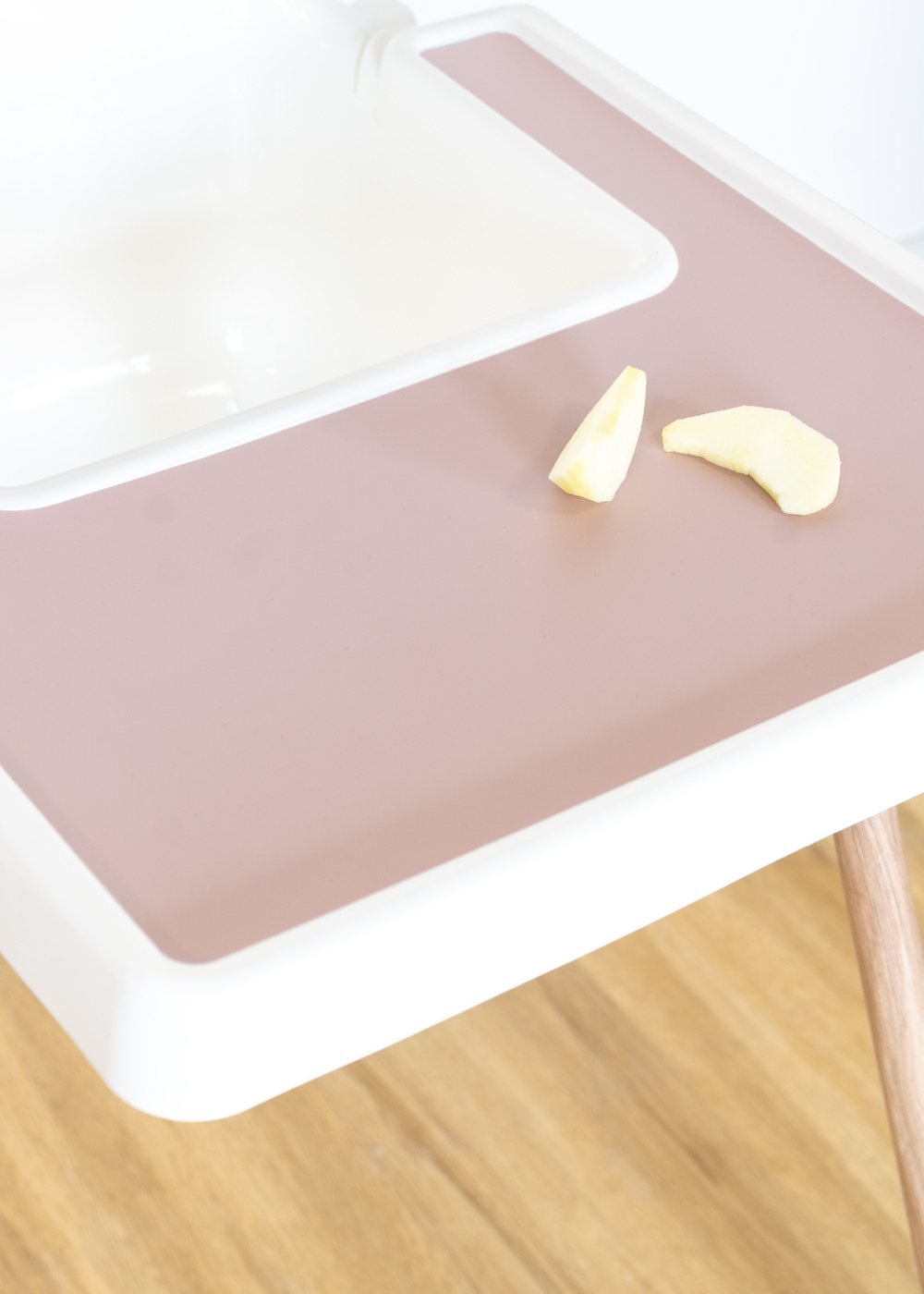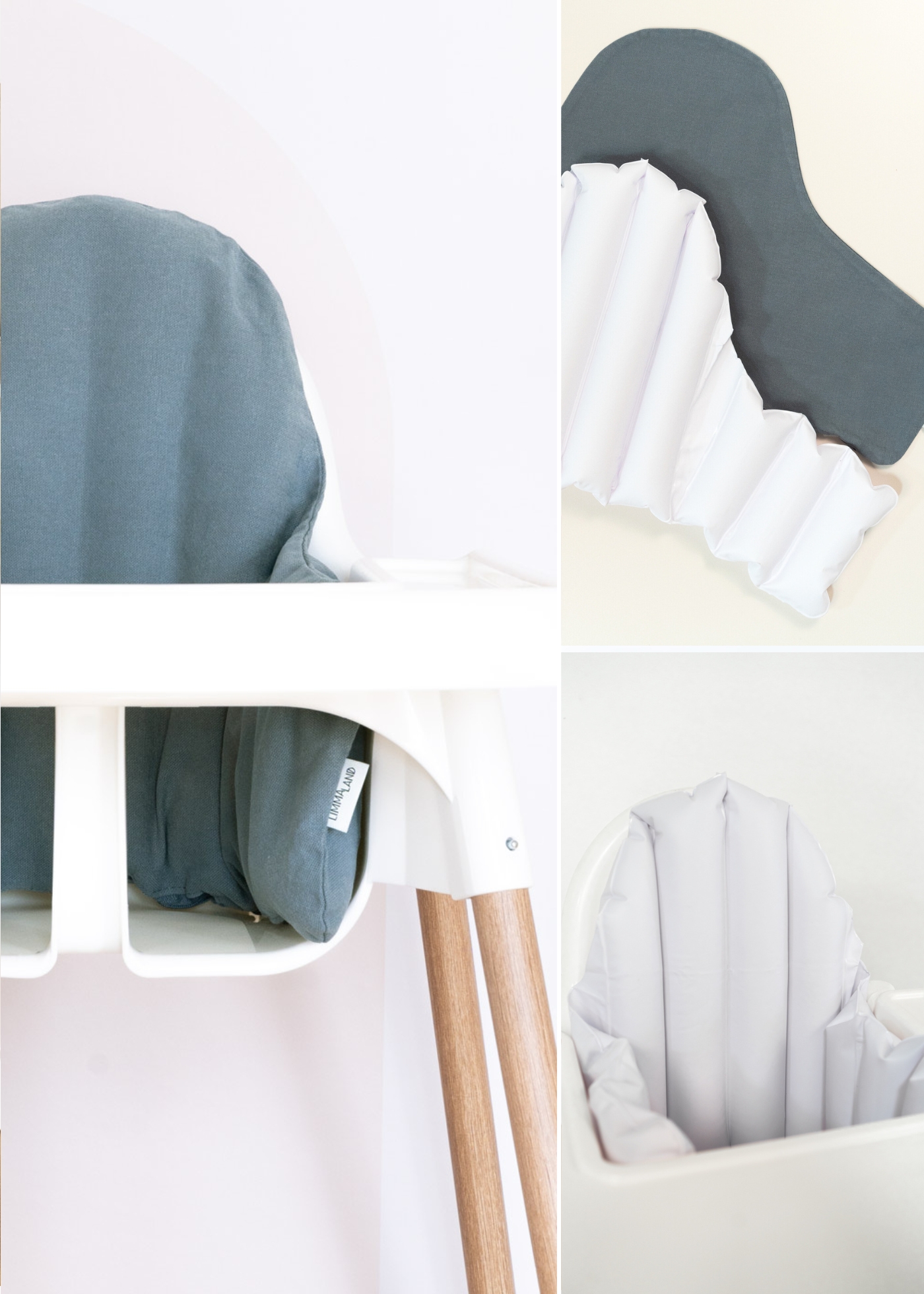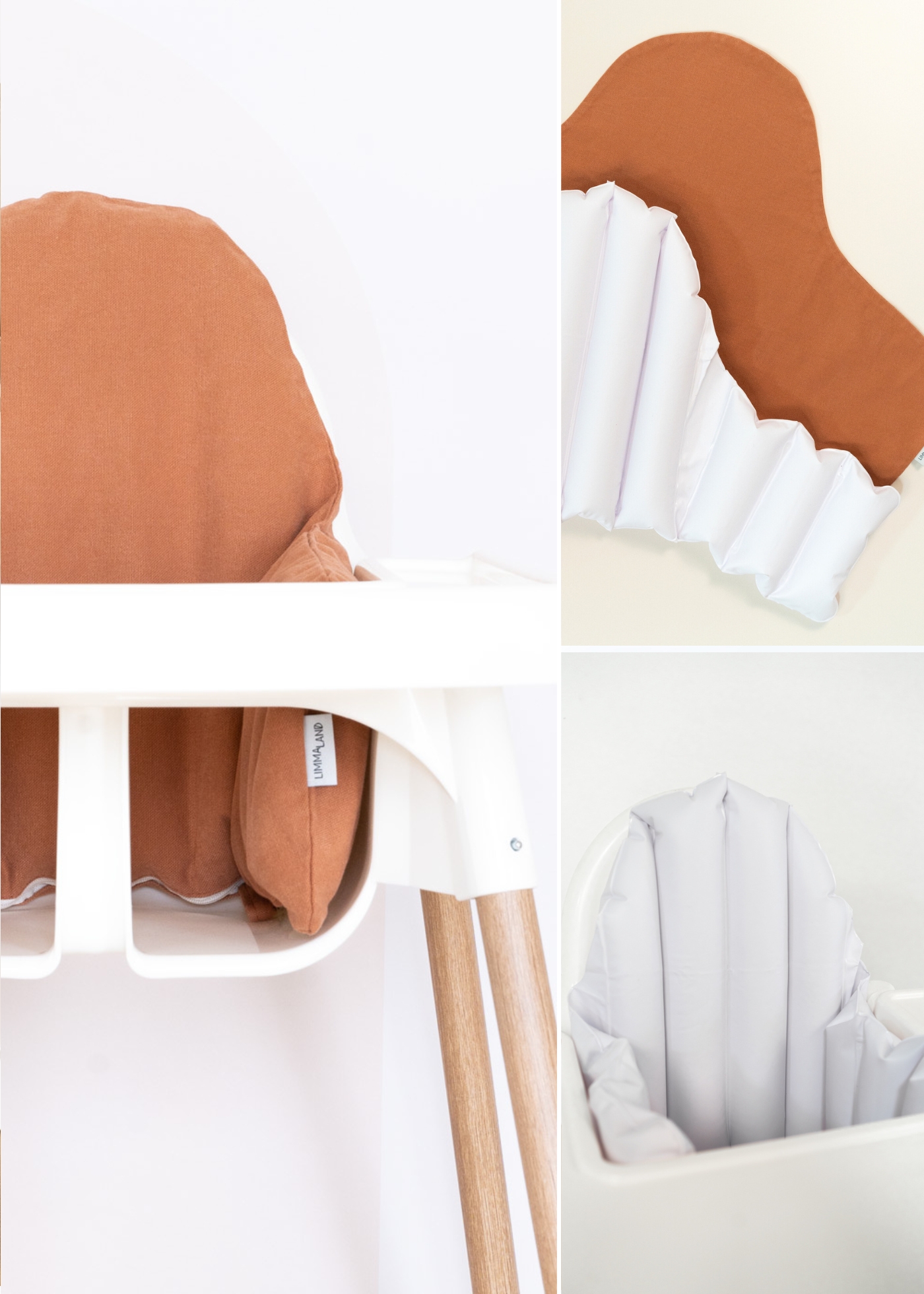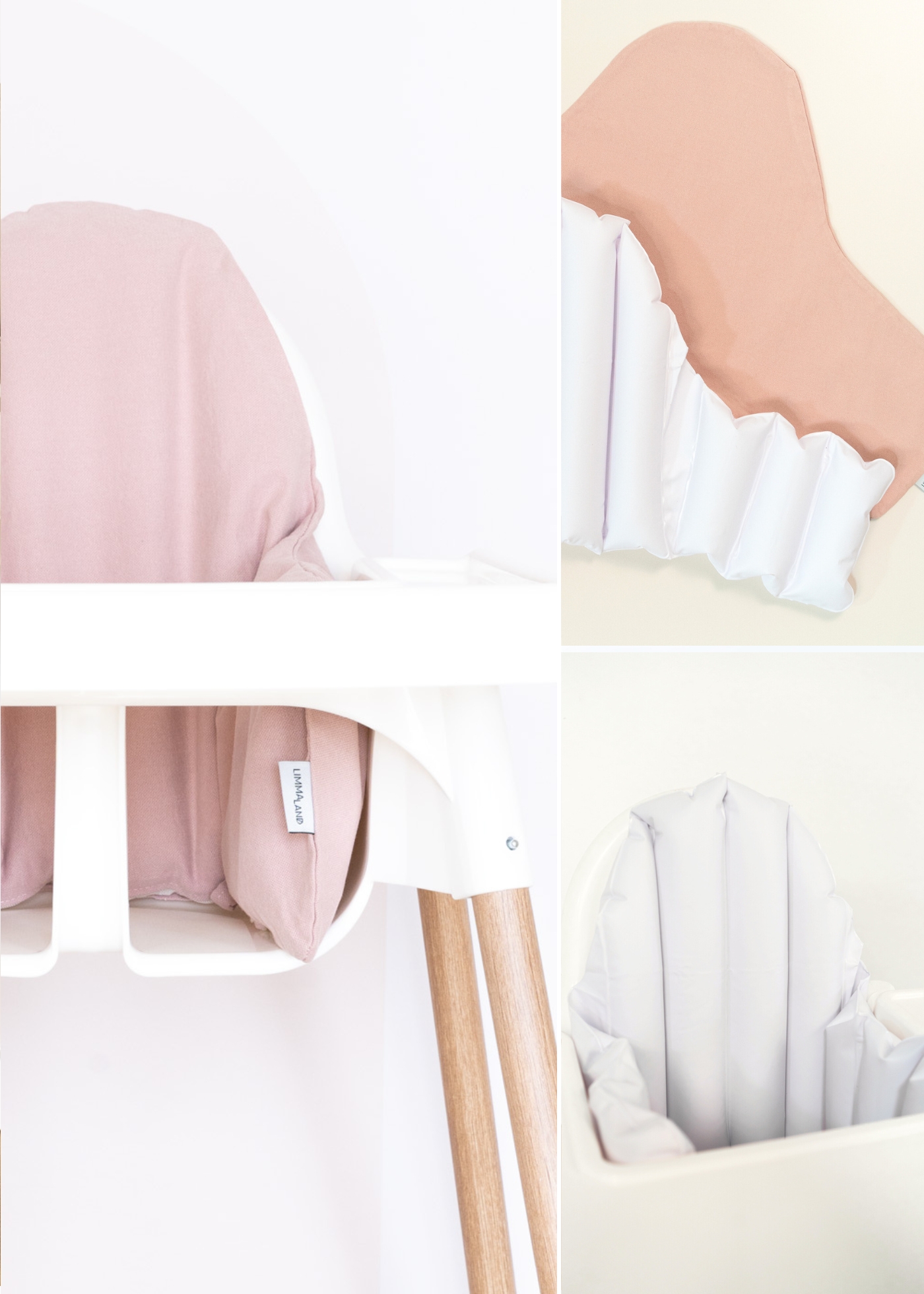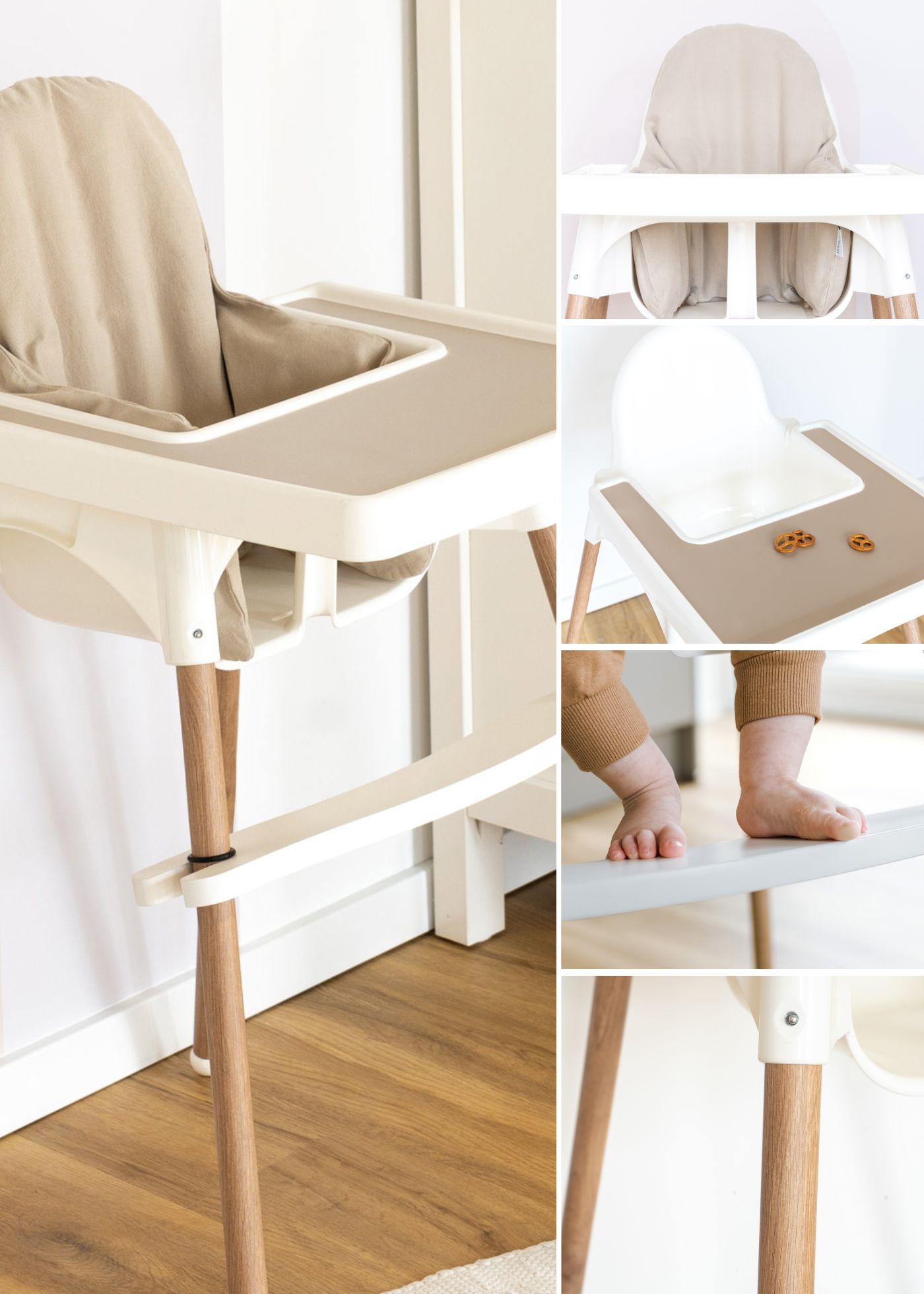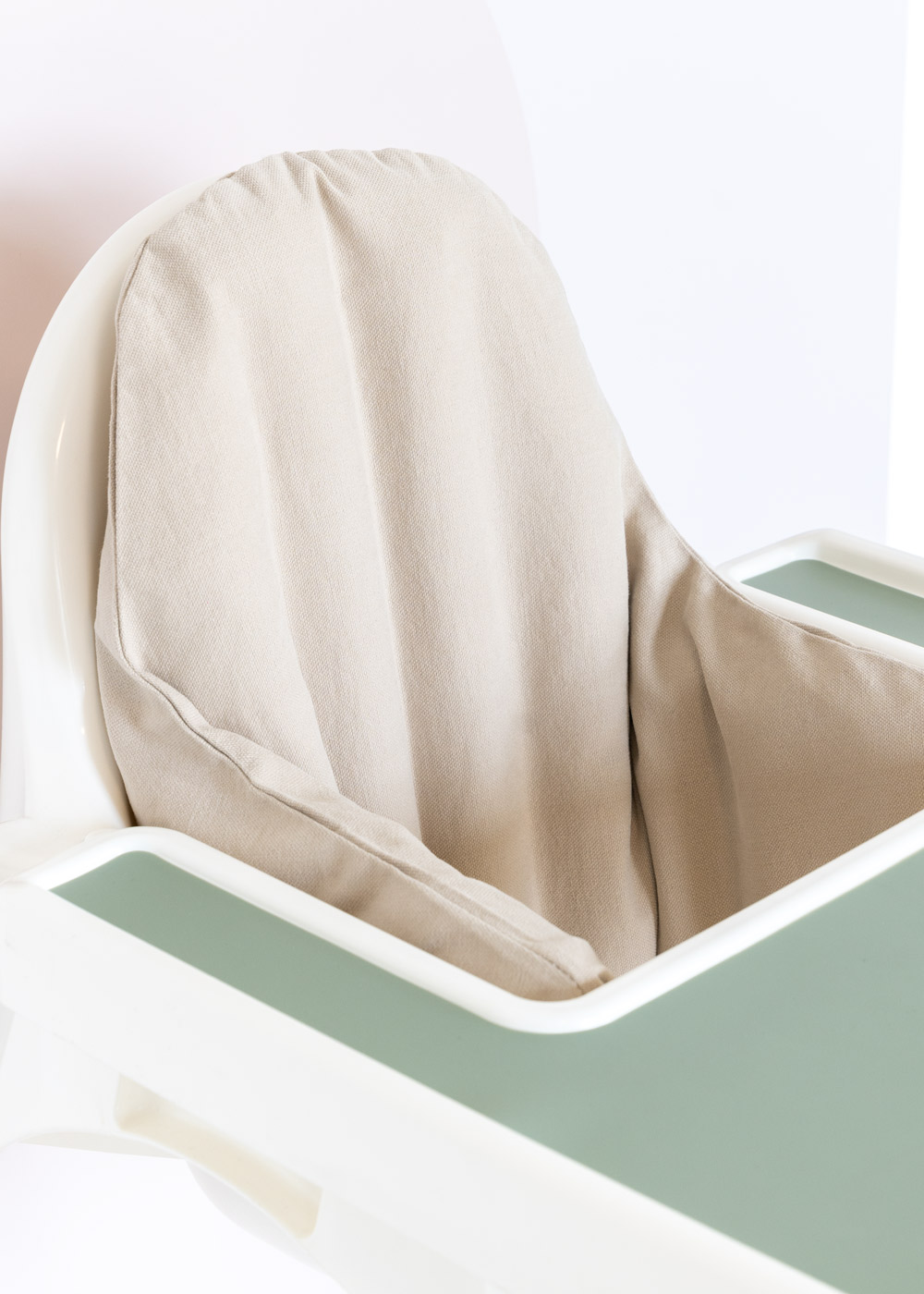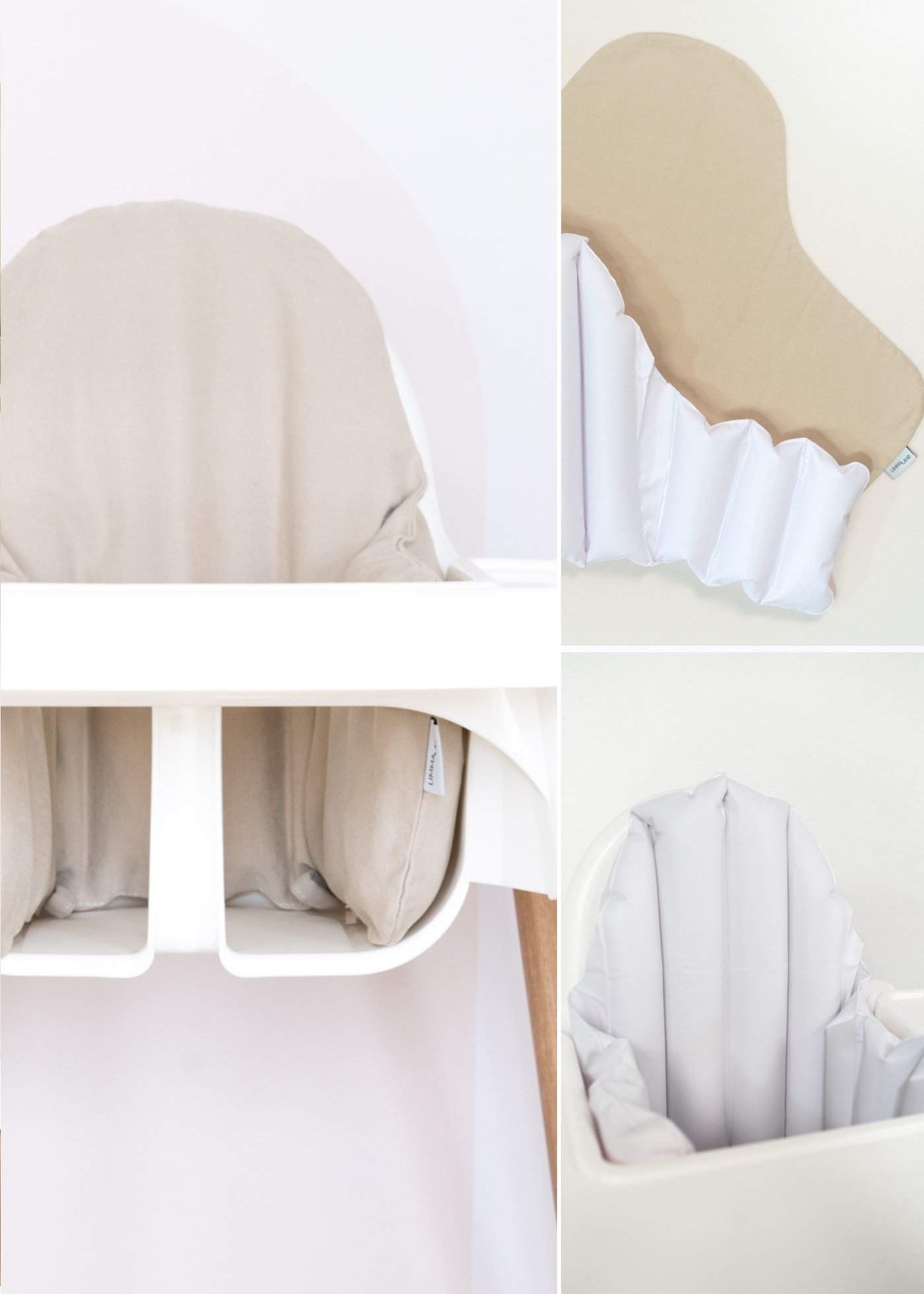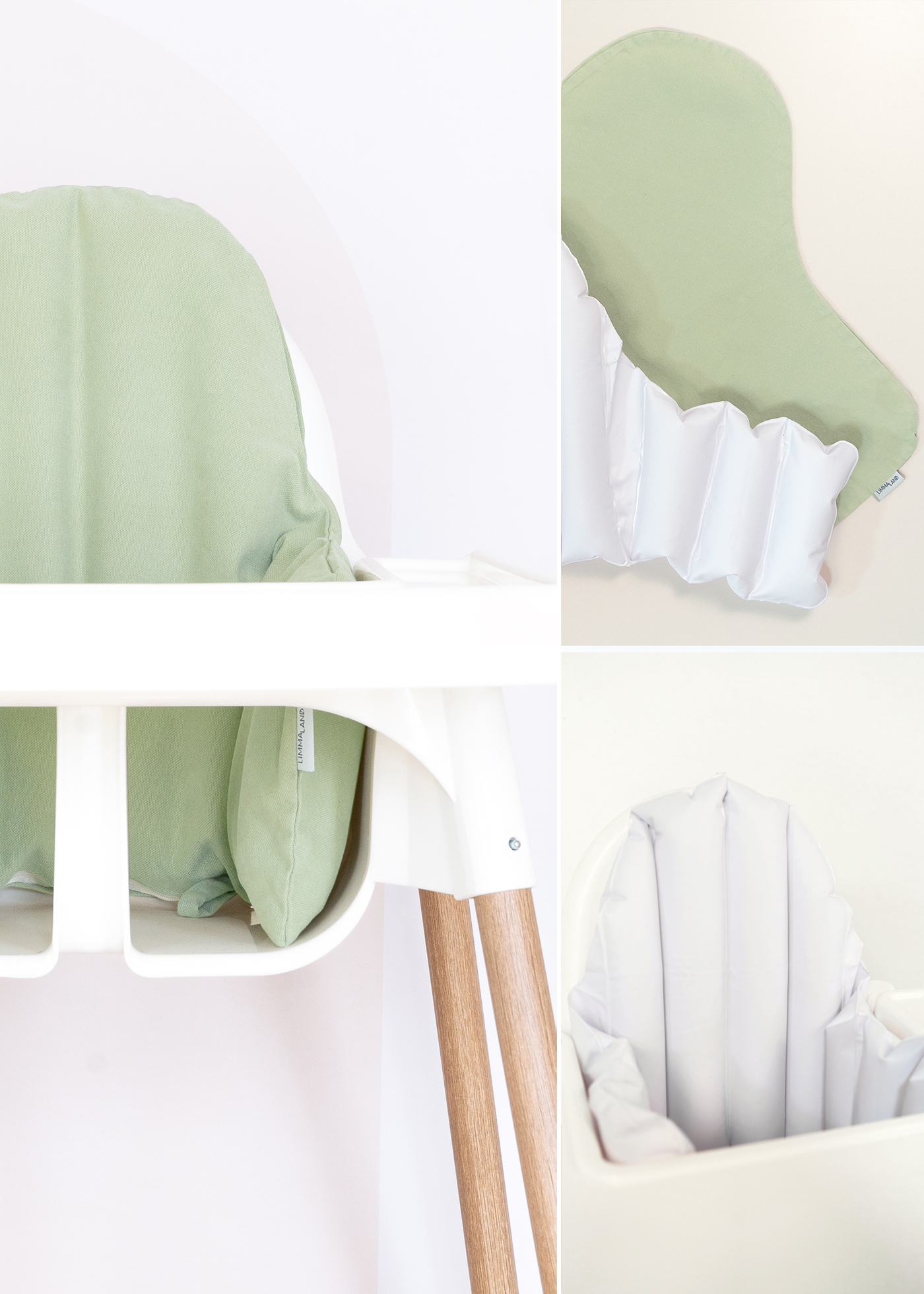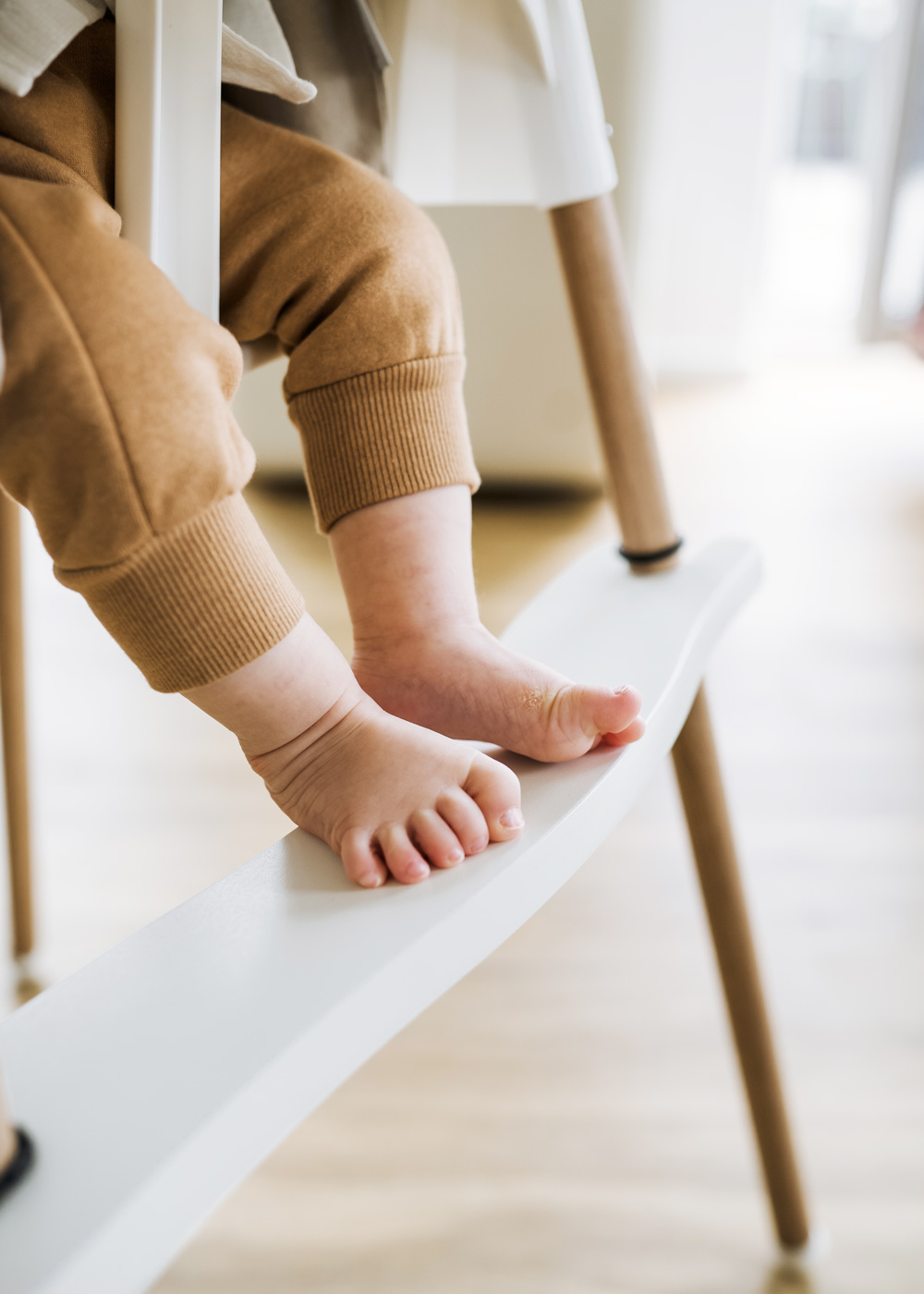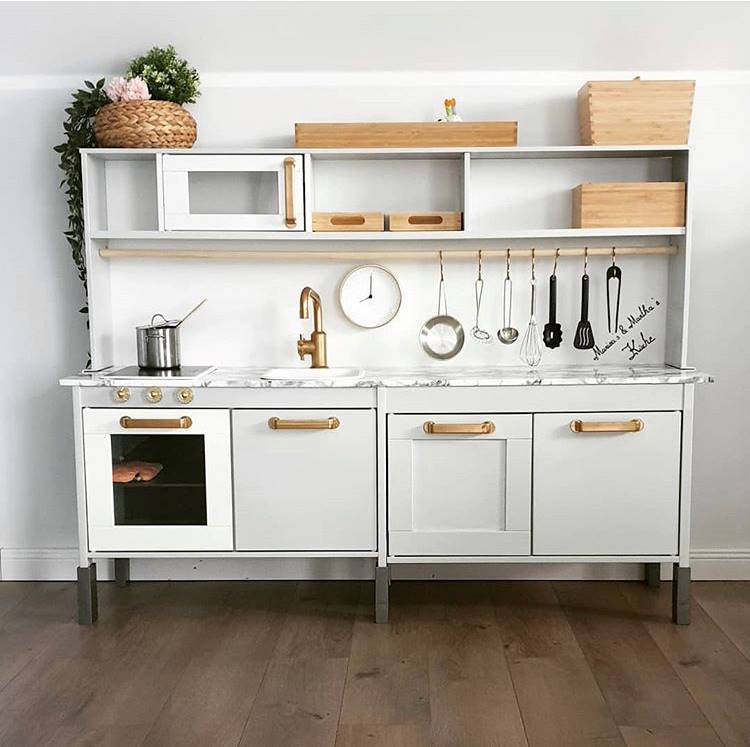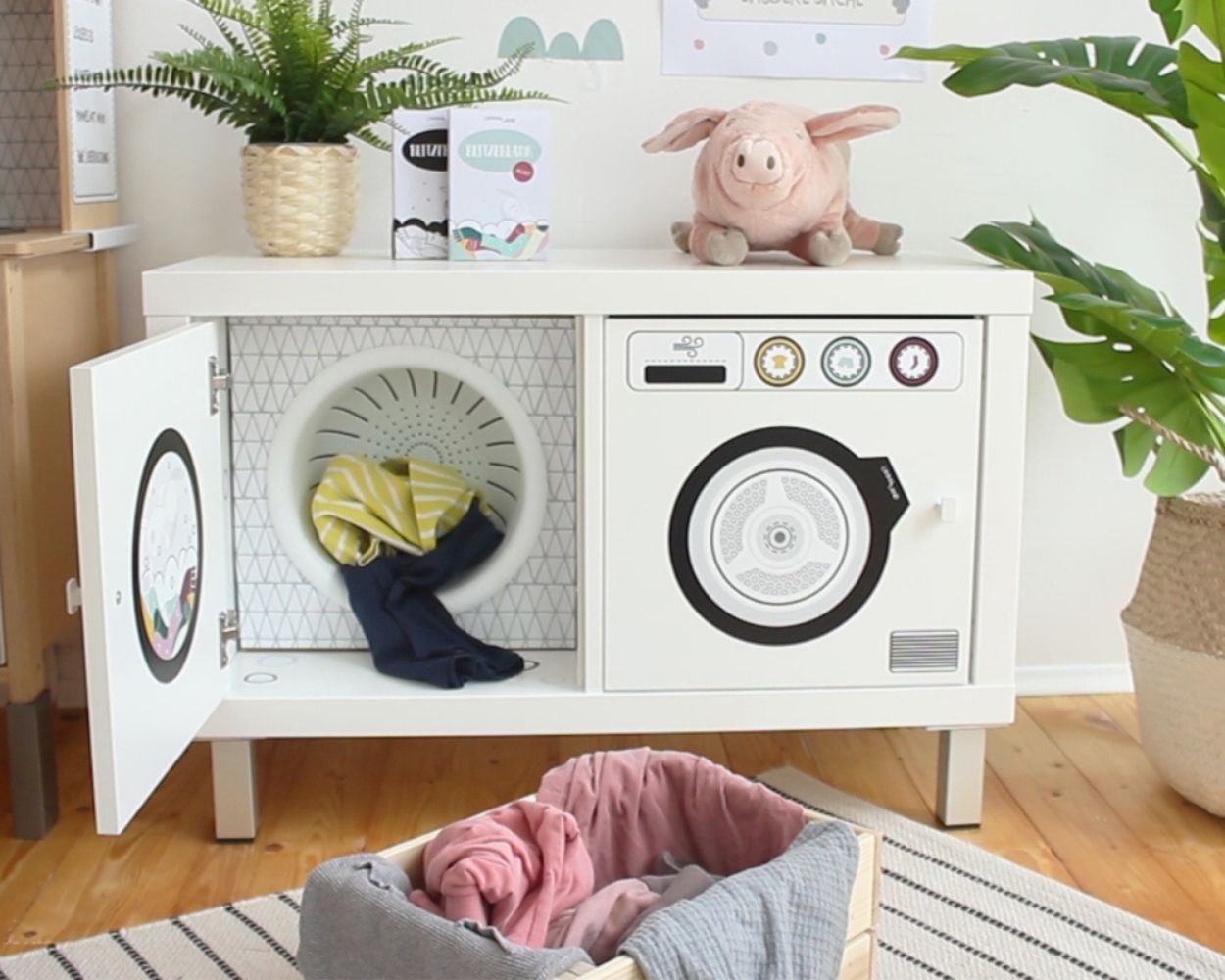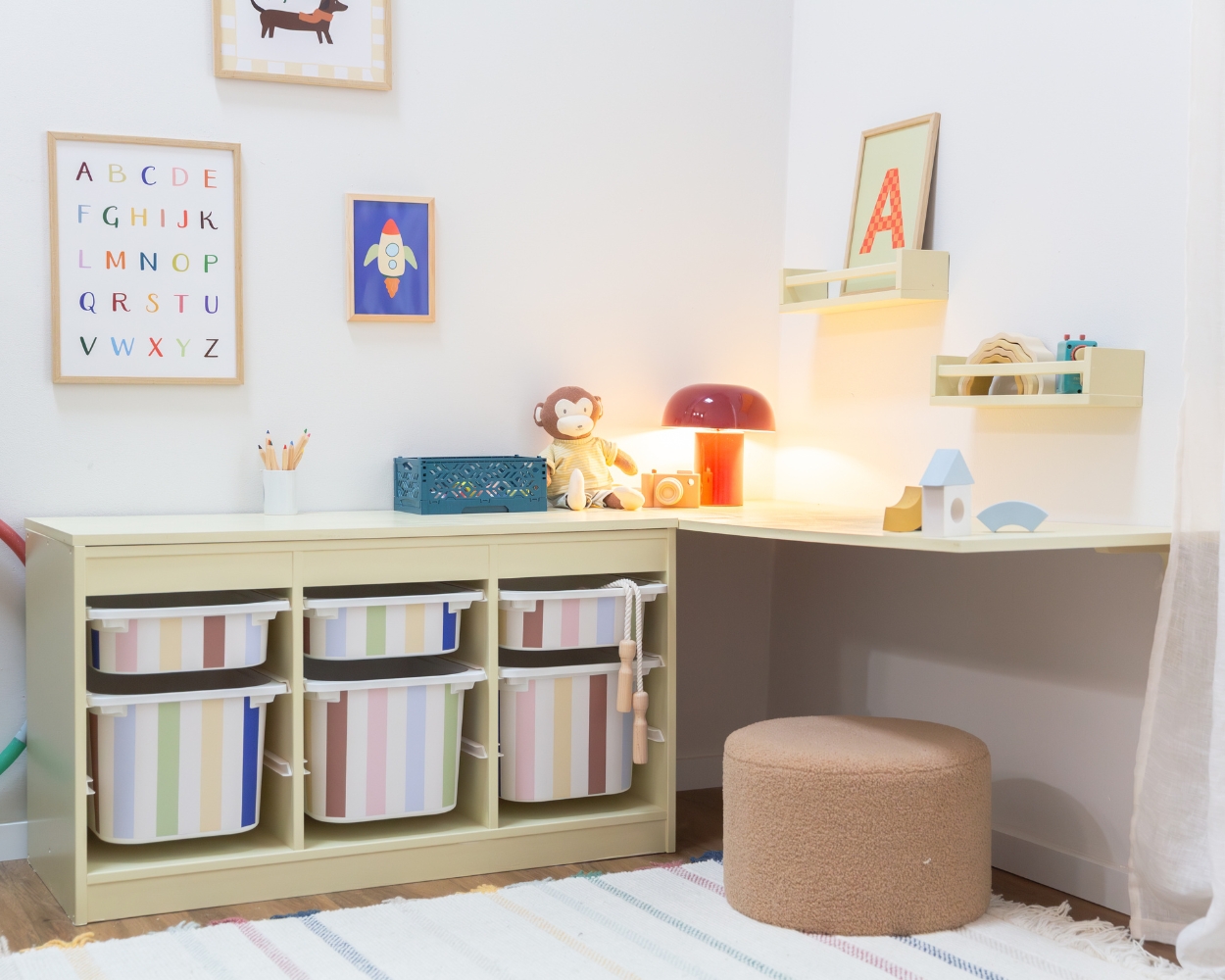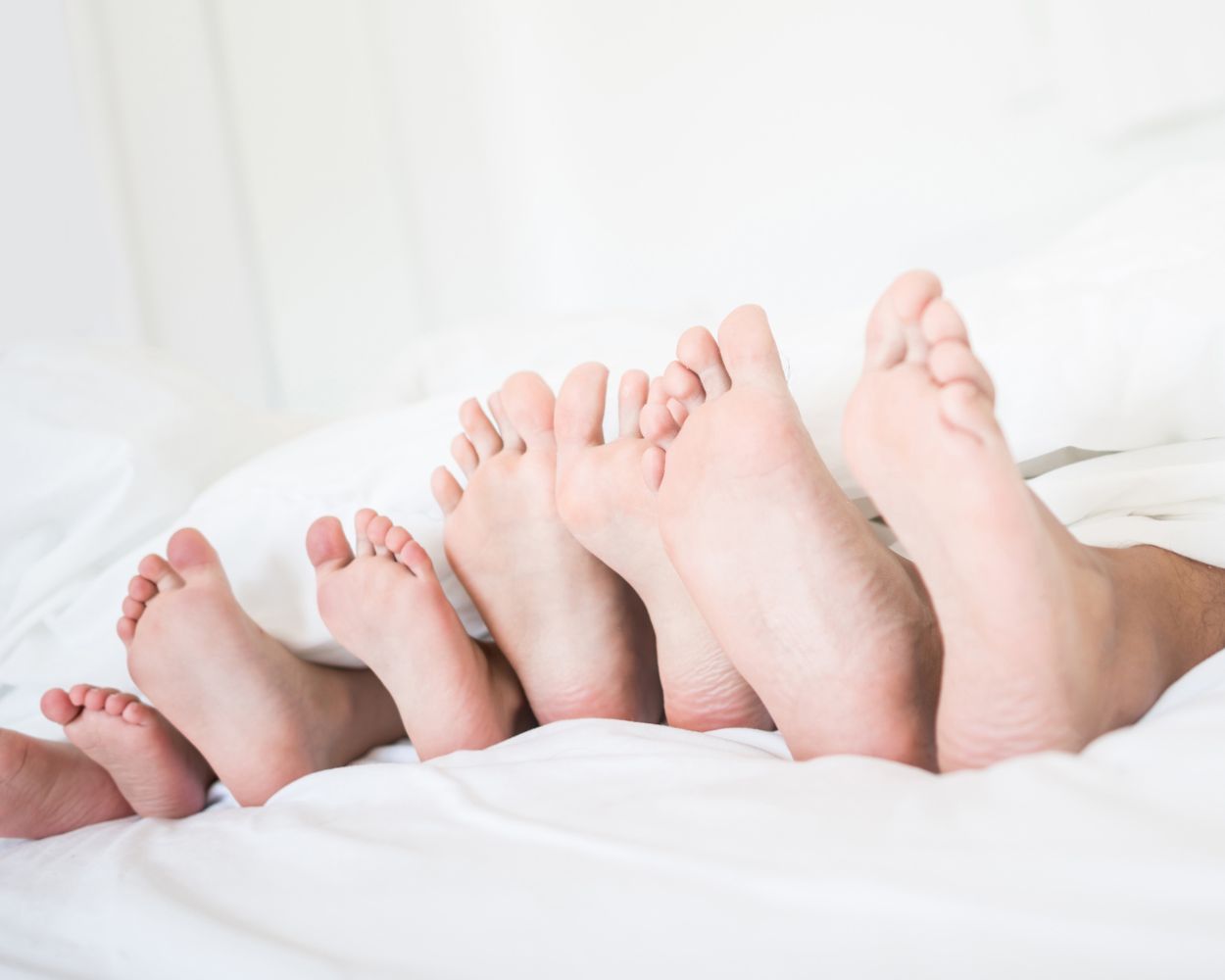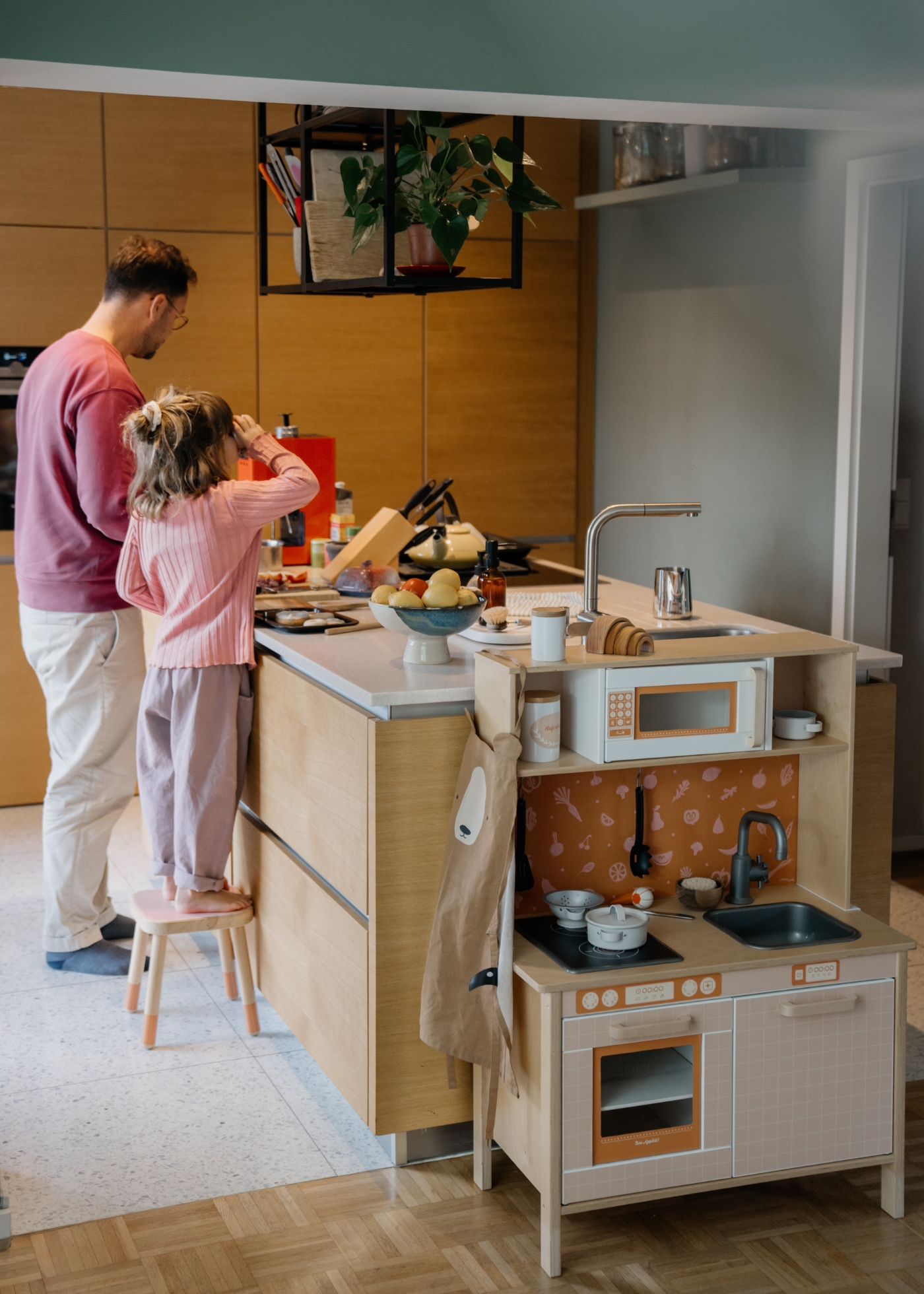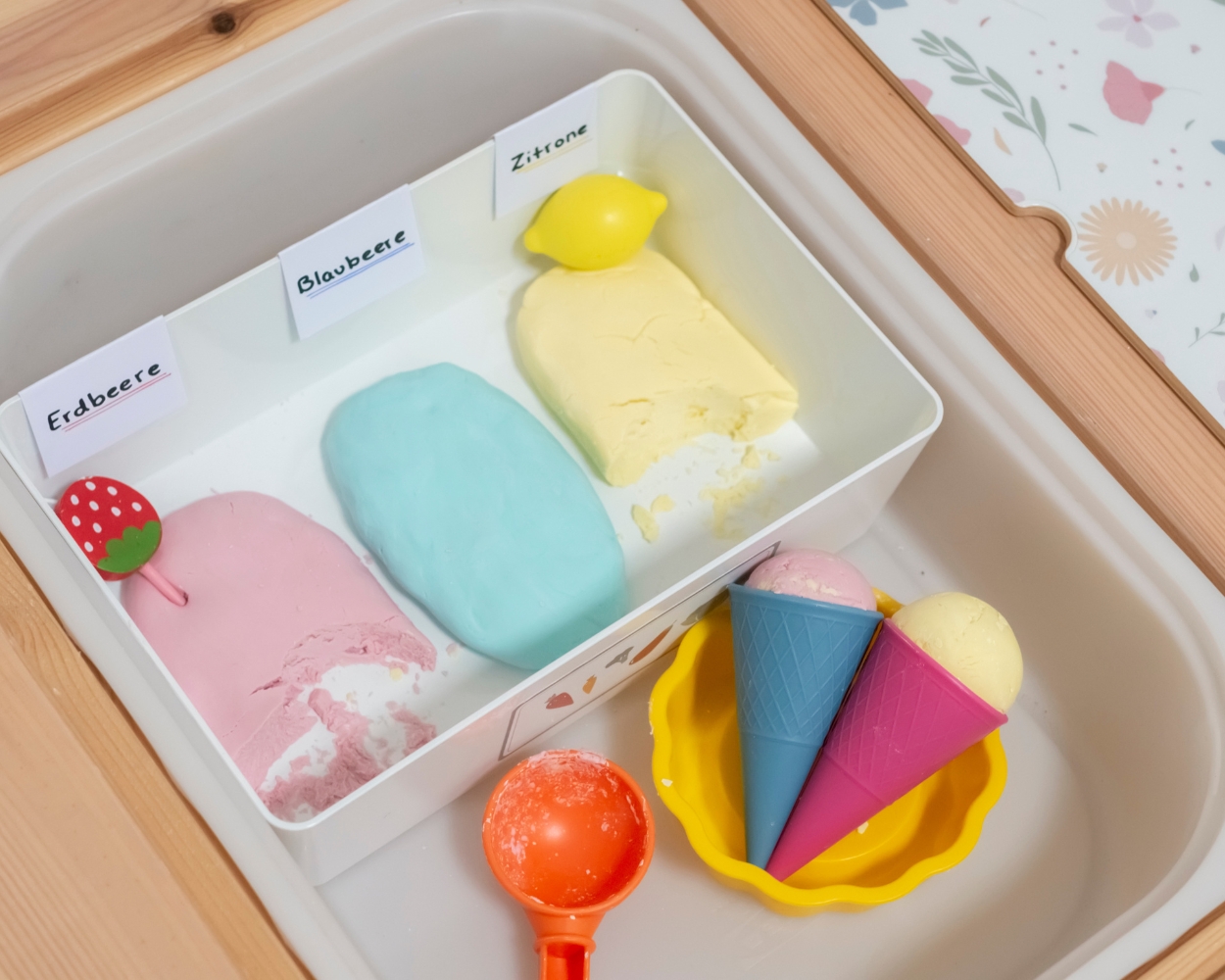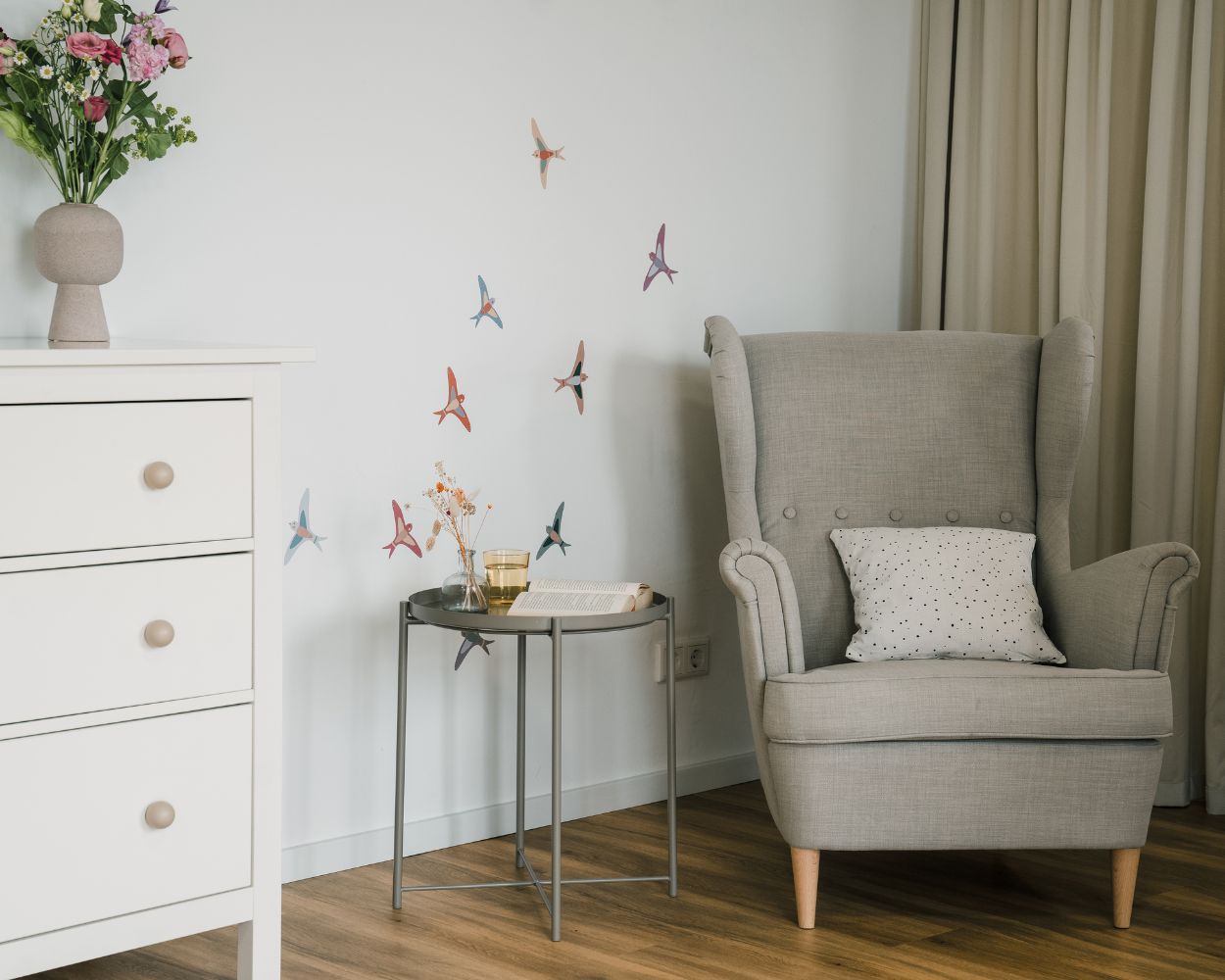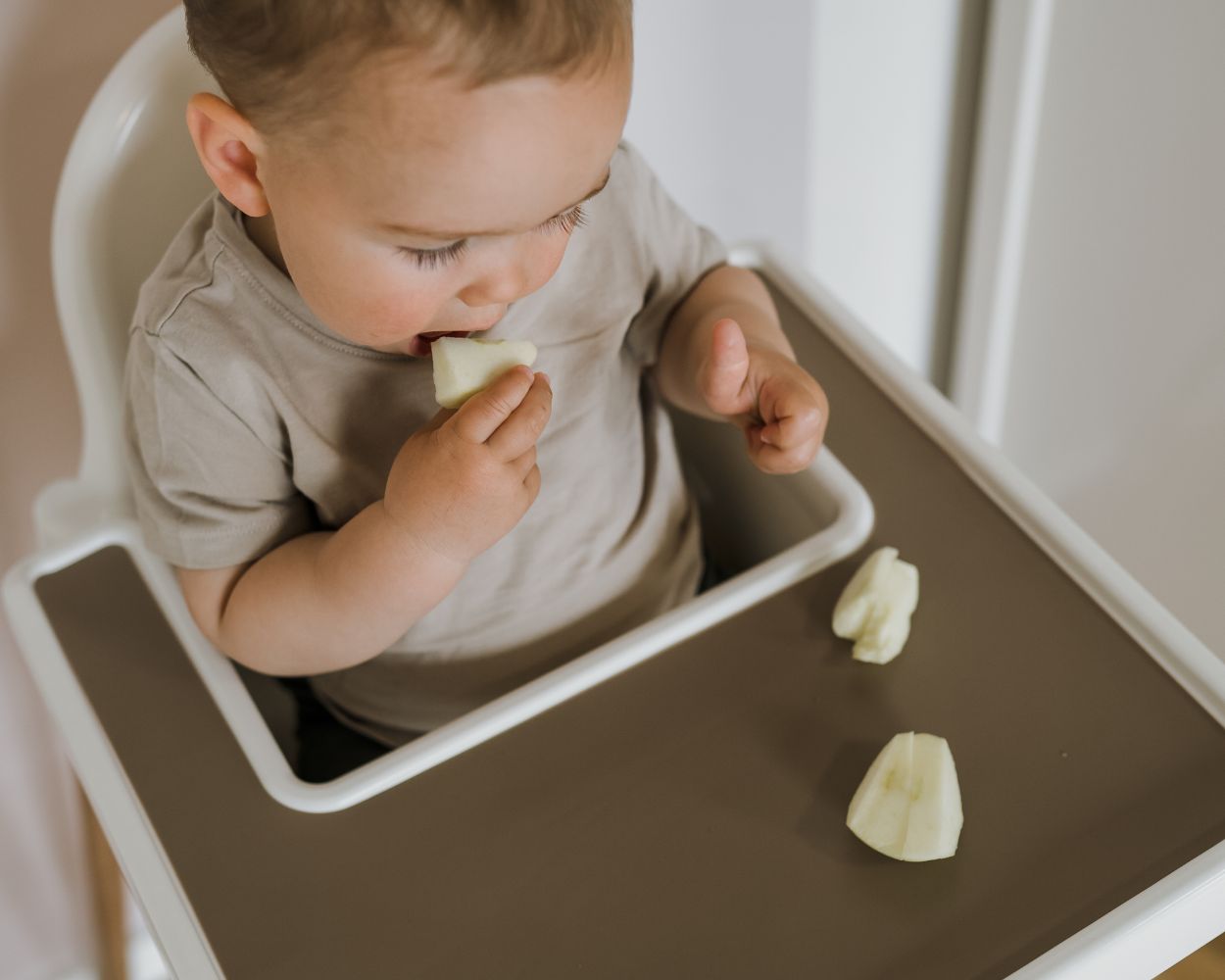
Complementary food for babies: tips from the experts

Complementary food for your baby: tips from the experts
The introduction of complementary foods is an important milestone in your baby's development. It marks the transition from a milk-only diet to solid foods and allows your baby to get to know new flavours and textures. Pia and Isabell from Malama advise families on introducing complementary foods and have shared their expert knowledge with us. In this article, they answer your most frequently asked questions about introducing complementary foods.
What is complementary feeding and why is it important?
Complementary feeding refers to the introduction of solid foods alongside milk feeding for babies. It plays a crucial role in your child's development as it provides important nutrients and eases the transition to solid foods. Introducing complementary foods allows your baby to learn about new flavours and textures, develop their taste preferences and gradually expand their diet.
Why complementary food is important
- Complementary food provides your baby with important nutrients for growth and development.
- Starting with solid foods allows your baby to discover new flavours and textures.
- Introducing complementary foods promotes your baby's independence and motor skills.
- Complementary food gradually prepares your baby for the family diet and strengthens social interaction at the dining table.
Overall, complementary feeding is an important milestone in a baby's nutritional development. It offers the opportunity to expand the diet, discover new flavours and promote the baby's independence. However, complementary foods should always be introduced carefully and individually adapted to meet the baby's needs and development. Talking to your paediatrician or a specialist can be helpful in making the transition to complementary foods as smooth as possible.
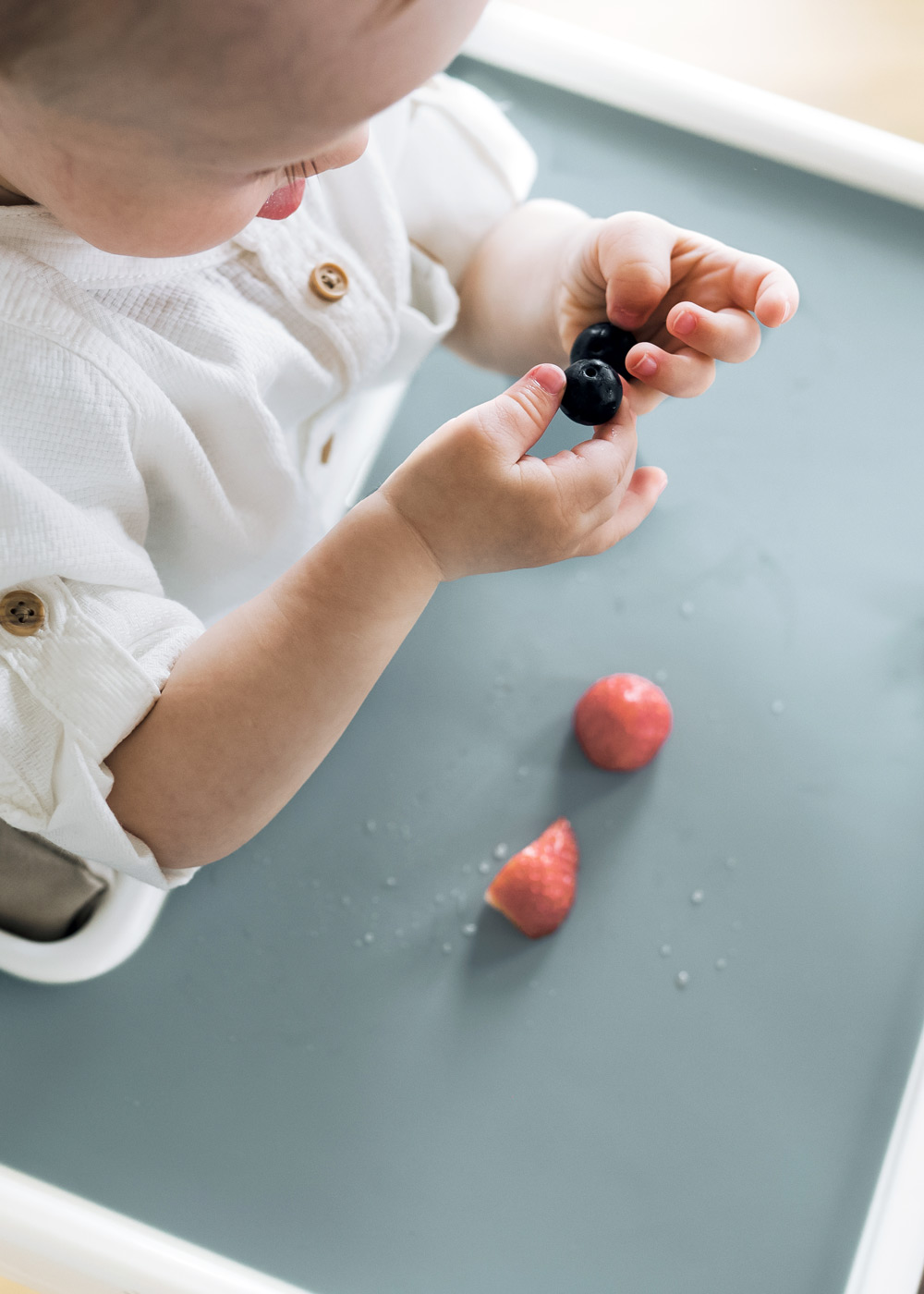
Complementary feeding or BLW: Which method is the right one?
Are you faced with the decision between complementary feeding and baby-led weaning (BLW)? Don't worry, you don't have to decide in favour of one method, as it is also possible to combine both approaches. Here is some information to help you decide:
- Complementary feeding: With complementary feeding, you feed your baby pureed or chopped food. This approach allows you to better control the texture and consistency of the food and ensure your baby gets all the nutrients they need. It's also a good way to gradually introduce certain allergens and customise the food to your baby's individual needs.
- Baby-led weaning (BLW): BLW involves offering solid foods in finger-friendly pieces that your baby can grasp and eat independently. This approach promotes your baby's motor skills and encourages them to manage their own meals. It is important that you offer your baby suitable foods that are safe to handle and do not pose a choking hazard.
- Combining complementary feeding and BLW: Many parents choose to practice both complementary feeding and BLW. You could sometimes offer your baby pureed or chopped foods and at other times give them finger-friendly pieces to eat on their own. This way you can utilise the benefits of both methods and offer your baby a varied and balanced diet.
When deciding between complementary feeding and BLW, it is important to consider your baby's preferences and needs. Every baby is unique and there is no 'right' or 'wrong'. You can also speak to your paediatrician or a specialist for further advice and information. The important thing is that you choose a method that makes you and your baby feel comfortable and safe. So, don't get stressed and be open to new experiences. The most important thing is that your baby is healthy and happy while exploring the exciting world of solid foods.
Complementary food: When can I start feeding my baby?
When you can start feeding your baby complementary foods depends on various factors. First of all, it should be noted that the World Health Organisation (WHO) recommends exclusively breastfeeding babies up to the age of 6 months. The right time for complementary feeding cannot be generalised. Most parents start feeding their baby between 5 and 7 months. You can recognise when your baby is ready by the following signs.
Important signs of your baby's maturity
- Head control: Your baby can hold their head stable and hold it up independently.
- Sitting ability: Your baby can sit upright with only slight support on their back.
- Loss of the tongue-closing reflex: At the beginning, babies automatically push food out of their mouth with their tongue. When the tongue-tie reflex has disappeared, this is a sign that your baby is ready to eat solid food.
- Interest in food: Your baby shows interest in the food you are eating and may try to grab it or imitate you.
- Hand-mouth coordination: Your baby can reach for objects and guide them to their mouth. It shows interest in exploring and tasting food on its own.
- Developed chewing movements: Your baby makes chewing movements with their mouth to manipulate solid objects.
It is important to note that these signs of maturity are only guidelines and each baby develops at their own pace. Watch your baby carefully and listen to their signals. When he shows these signs of maturity and you are sure that he is ready, you can start introducing complementary foods.
Remember that complementary food is a supplement to milk feeding and that breastfeeding or bottle feeding still play an important role. Start with small portions and gradually increase the amount as your baby gets used to the new flavours and textures.
Enjoy this exciting phase of baby development and have fun discovering new culinary adventures together with your baby!
What is suitable as a first complementary food?
Introducing complementary foods opens up a new world of flavours for your baby. Here are some recommended first complementary foods you can try:
- Sweet potato: Sweet potato is an excellent choice for first complementary foods. It is mild, easy to digest and rich in important nutrients such as vitamin A, fibre and potassium. You can peel them, cut them into small pieces and gently steam them until they are soft enough to mash or puree.
- Courgette: Courgette is another popular vegetable for first foods. It is gentle on your baby's sensitive stomach and contains important nutrients such as vitamin C, fibre and potassium. Slice the courgette, steam it and then puree it to a smooth consistency.
- Avocado: Avocado is a healthy and creamy option for the first complementary food. It contains healthy fats, fibre and a variety of vitamins and minerals. Peel a ripe avocado, remove the stone and mash the flesh to a smooth consistency. You can serve it on its own or combine it with other vegetables.
- Carrot: Carrots are rich in beta-carotene, which is converted into vitamin A in the body. Peel the carrots, cut them into pieces and cook them until they are soft. You can mash them or cut them into small pieces, depending on how well your baby can chew.
- Parsnip: Parsnips are a mild root vegetable that is rich in fibre and vitamins. Peel the parsnips, cut them into pieces and cook them until they are soft. You can puree them or cut them into small pieces to offer your baby different textures.
- Pumpkin: Pumpkin is also a popular vegetable for the first complementary foods. It is rich in fibre, vitamins and minerals. Peel the pumpkin, remove the seeds and cut it into pieces. Cook it until it is soft and puree it to a smooth consistency or offer it in small pieces.
Remember to introduce new foods one at a time and monitor your baby's reaction to allergies or intolerances. Also follow the recommended age guidelines for certain foods to minimise the risk of choking. The range of first complementary foods is varied and you can gradually introduce different vegetables to explore your baby's taste preferences. It's important to pay attention to your baby's individual needs and reactions, and if you have any questions or uncertainties, consult your paediatrician or a nutritionist to ensure that your baby's complementary foods are balanced and safe.
Which foods are unsuitable as complementary foods?
When introducing complementary foods, it is important to avoid certain foods as they can pose an increased risk of choking. Here are some foods that you should avoid in the first few months of complementary feeding:
- Foods with chunky pieces: Avoid foods that contain chunky pieces, such as whole nuts, grapes or cherry tomatoes. Always cut them into small, child-friendly pieces to prevent choking.
- Hard or sticky food: Avoid foods such as hard candy, caramel or marshmallows as they can pose a choking risk. You should also avoid sticky foods such as peanut butter in the first few months.
- Raw foods: Avoid eating raw meat, raw eggs or raw fish. They can contain potentially dangerous bacteria and increase the risk of food poisoning.
- Honey: Avoid using honey in complementary foods as it can increase the risk of botulism, a serious illness that can occur in infants.
- Strongly flavoured food: Avoid strongly flavoured or spicy foods as they can irritate your baby's sensitive stomach. Start with mild and well-tolerated flavours.
It is important to follow these recommendations to ensure your baby's safety and well-being during the introduction of complementary foods. If in doubt, you can always consult your paediatrician or a nutritionist for further information and advice.
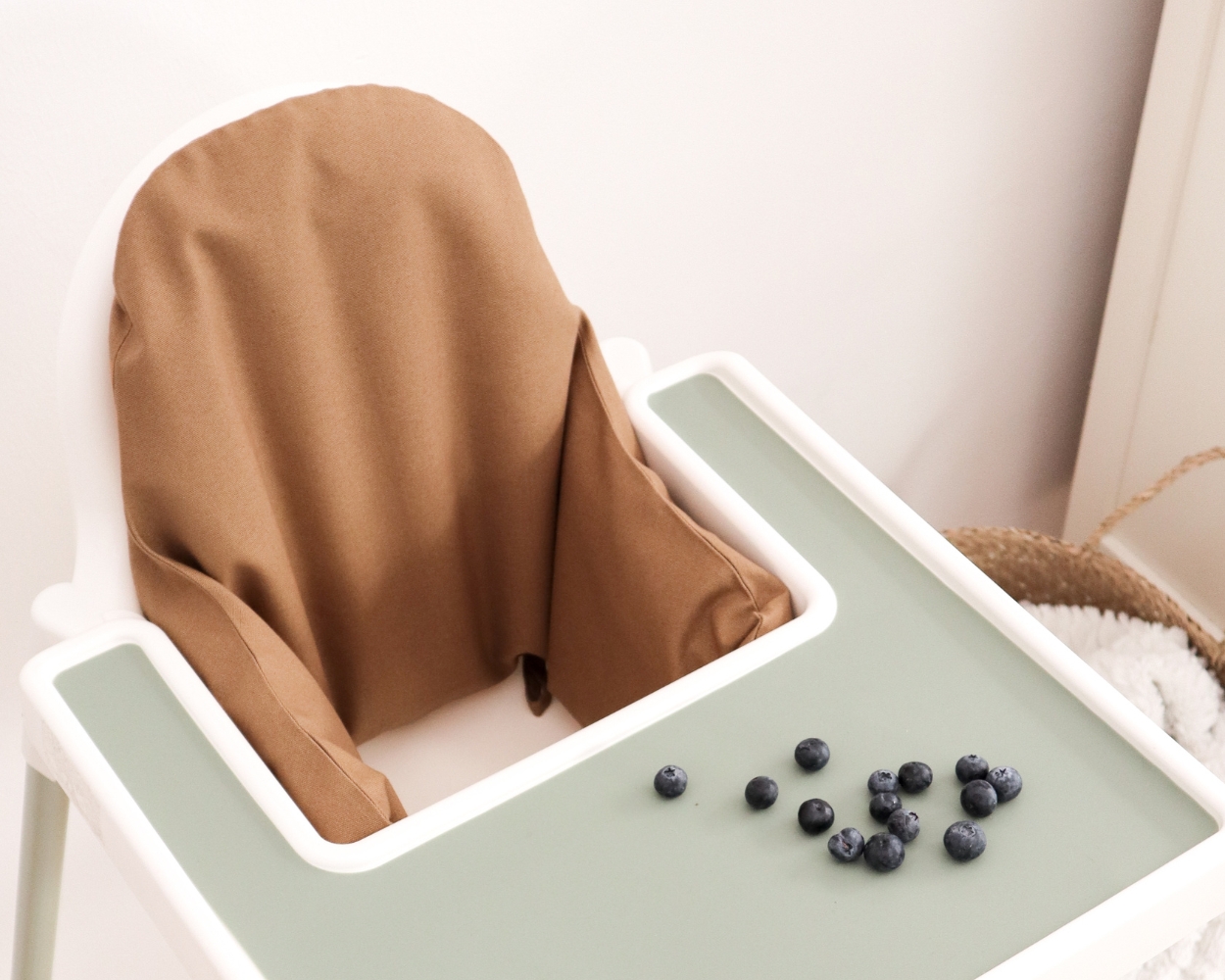
Is it normal for my baby to choke when feeding complementary food?
This can happen at the beginning. After all, your baby has only been drinking so far. Some children need time to get used to solid food and like everything pureed at first. This allows them to slowly feel their way towards anything chunky. Over time, children become more competent and their oral motor skills improve. However, frequent choking may indicate a certain immaturity and you may want to wait a little longer before feeding complementary foods.
Why should I only feed my baby while sitting up?
Sitting upright is important because babies are actually more likely to choke on chunky food when lying down. When sitting up, the stomach is in an optimal position to absorb the food. Perhaps you have already tried eating lying down yourself. Even experienced adults often find this difficult. And for complementary food beginners, eating lying down is even more difficult. Sitting up also promotes your baby's self-determination. They can discover their food for themselves and actively participate. Eating lying down, on the other hand, is a passive activity for your baby.
Why is footrest important when feeding complementary foods?
With a footrest allows your baby to put their feet up and achieve a healthy spine posture. Correct posture in the highchair provides many benefits for your baby, which are very important when introducing complementary foods:
- Ergonomic sitting position: a footrest helps to create an ergonomic sitting position for your baby. If his feet can rest firmly on a footrest, his back and spine are optimally supported. This allows them to concentrate better on eating and maintain a comfortable and upright posture.
- Stability and balance: Resting their feet on a footrest increases your baby's stability when feeding. They can support themselves better and have better control over their movements. This can help them to sit more securely and less wobbly.
- Reducing the risk of choking: A footrest can help to minimise the risk of choking. By giving your baby a firmer hold and a stable sitting position, they can concentrate better on chewing and swallowing. There is less risk of food accidentally getting into the airways.
What features should the footrest have to make it safe and beneficial for my baby?
Your child should be able to place their feet comfortably and lean on it. In addition, the footrest height-adjustable should also be able to allow your baby to place their feet flat on it at all times and not just reach the support with their toes. The material wood has additional advantages over plastic: Due to its density and strength, wood offers the necessary resistance to "get a good grip".
What to do for constipation?
If your baby is struggling with constipation, there are some foods that can have a laxative effect and help to ease bowel movements. Here are some tips:
- Prune puree: Prune puree is known for its laxative effect and can help relieve constipation. Give your baby a small spoonful of prune puree to stimulate digestion.
- Pear: Pears contain fibre and natural sugars that can stimulate bowel movements. Offer your baby pureed or steamed pears as a gentle laxative.
- Warm apple juice: A sip of warm apple juice can also help with constipation. However, make sure that the apple juice is not too hot and dilute it with a little water if necessary to reduce the concentration.
- Hydration: Make sure your baby is getting enough fluids, especially water. A good fluid intake can help to regulate bowel movements.
In addition to these laxative foods, you can also try gently massaging your baby's tummy muscles or holding them down to stimulate a bowel movement. If constipation persists or you are concerned, you should consult your paediatrician for further advice and possible treatment options. Remember that every baby's digestion is different and it is normal to experience occasional constipation. With the right measures and support, you can help your baby to develop a healthy digestive system.
How much complementary food does my baby need?
The amount of complementary food your baby needs varies from person to person and depends on their needs and developmental stages. In general, at the beginning of complementary feeding, it is less about the amount of food and more about exploring new flavours and textures. Here are some important points to bear in mind:
- Taste and explore: The first few months of complementary feeding are all about giving your baby the opportunity to try different foods and gain experience with different flavours and textures. The main source of nutrition remains breast milk or formula milk, which provide the necessary nutrients.
- Consider individuality: Every baby has their own rate of development and appetite. Some babies can eat larger amounts of complementary food from the start, while others will only accept small portions at first. It is important to follow your baby's cues and not force it. The pace at which complementary foods are introduced can vary from baby to baby.
- Combination with breastfeeding or bottle feeding: At the beginning, complementary food serves as a supplement to breastfeeding or bottle feeding. Your baby continues to receive the necessary breast milk or infant formula to cover its nutritional requirements. Complementary feeding serves to introduce new foods and broaden your baby's taste horizons.
If you have any questions or are unsure about the amount of complementary food, you should always consult your paediatrician.Follow your baby's natural signals, pay attention to signs of fullness and hunger and give him the opportunity to regulate his own appetite and feeling of fullness. The amount of complementary food will gradually increase over time as your baby continues to discover new foods and develop their eating skills.
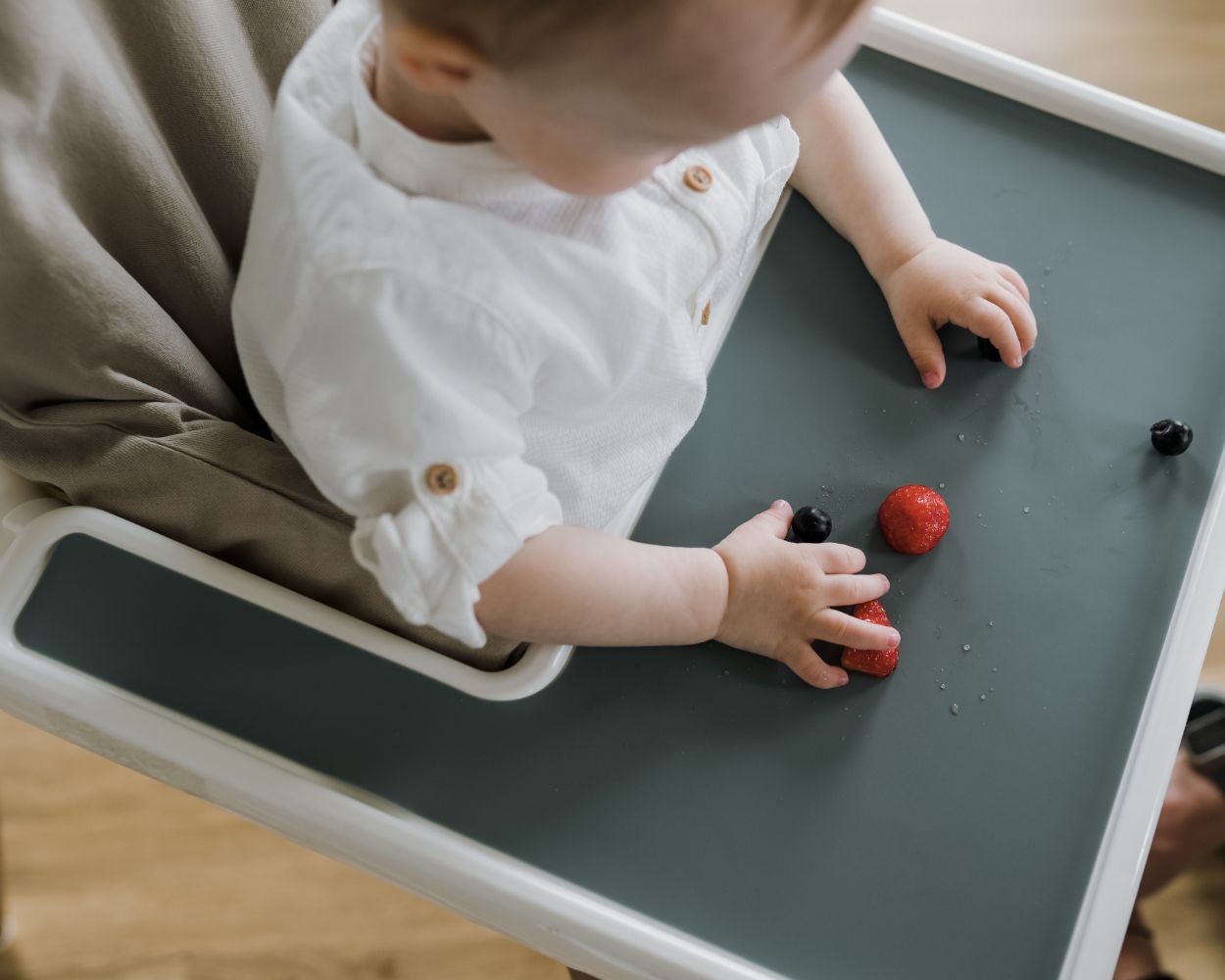
How much drinking water does my baby need when breastfeeding and complementary feeding?
Hydration is important during both breastfeeding and complementary feeding to ensure that your baby stays sufficiently hydrated. Here are some important points to bear in mind:
- Breast milk or formula milk as the main source of fluids: In the first few months of life, breast milk or formula milk is the main source of hydration for your baby. These contain all the nutrients and fluids your baby needs for growth and development.
- Water intake during complementary feeding: When you start introducing complementary foods, you can also offer your baby water. This can be done during mealtimes.
- Pay attention to your baby's needs and signals: Fluid needs can vary depending on age, activity level and weather conditions. Pay attention to your baby's signals, such as signs of thirst, increased drooling or dry lips.
Keep the fluid intake in balance by paying attention to your baby's natural signals and offering him sufficient fluids during both breastfeeding and complementary feeding.
Should I supplement omega-3 if we don't eat fish?
Omega-3 fatty acids play an important role in the healthy development of your baby. They are particularly important for brain and eye development. Normally, omega-3 fatty acids are obtained by eating fatty fish such as salmon, mackerel or tuna. However, if you or your baby do not eat fish for certain reasons, it may be necessary to supplement omega-3 fatty acids. Here are some important points to bear in mind:
- Consult with your paediatrician: Before considering omega-3 supplements for your baby, it's important to speak to your paediatrician. The doctor can assess your baby's specific nutritional needs and make recommendations for appropriate supplementation.
- Alternative sources of omega-3 fatty acids: If you are avoiding fish, there are other sources of omega-3 fatty acids that can be incorporated into your baby's diet. These include, for example, linseed, chia seeds or walnuts. Note, however, that it may be difficult for babies to chew or digest these foods. It is therefore important to choose the appropriate form and preparation, for example as a ground powder or in pureed form.
- Specific omega-3 supplements: In some cases, it may be necessary to use omega-3 supplements in the form of drops or capsules. These are usually specifically tailored to the needs of infants and contain the required amount of omega-3 fatty acids. Consult your paediatrician for recommendations and to determine the correct dosage.
- Take allergies or intolerances into account: When choosing omega-3 supplements, you should also consider allergies or intolerances. Find out about the ingredients and check that the product is free from allergens that your baby may be sensitive to.

Pia and Isabell from Malama Familienbegleitung offer baby courses, advice and workshops on topics such as complementary feeding, breastfeeding and sleeping. The experts share valuable tips on their Instagram channel @malama_familie.

